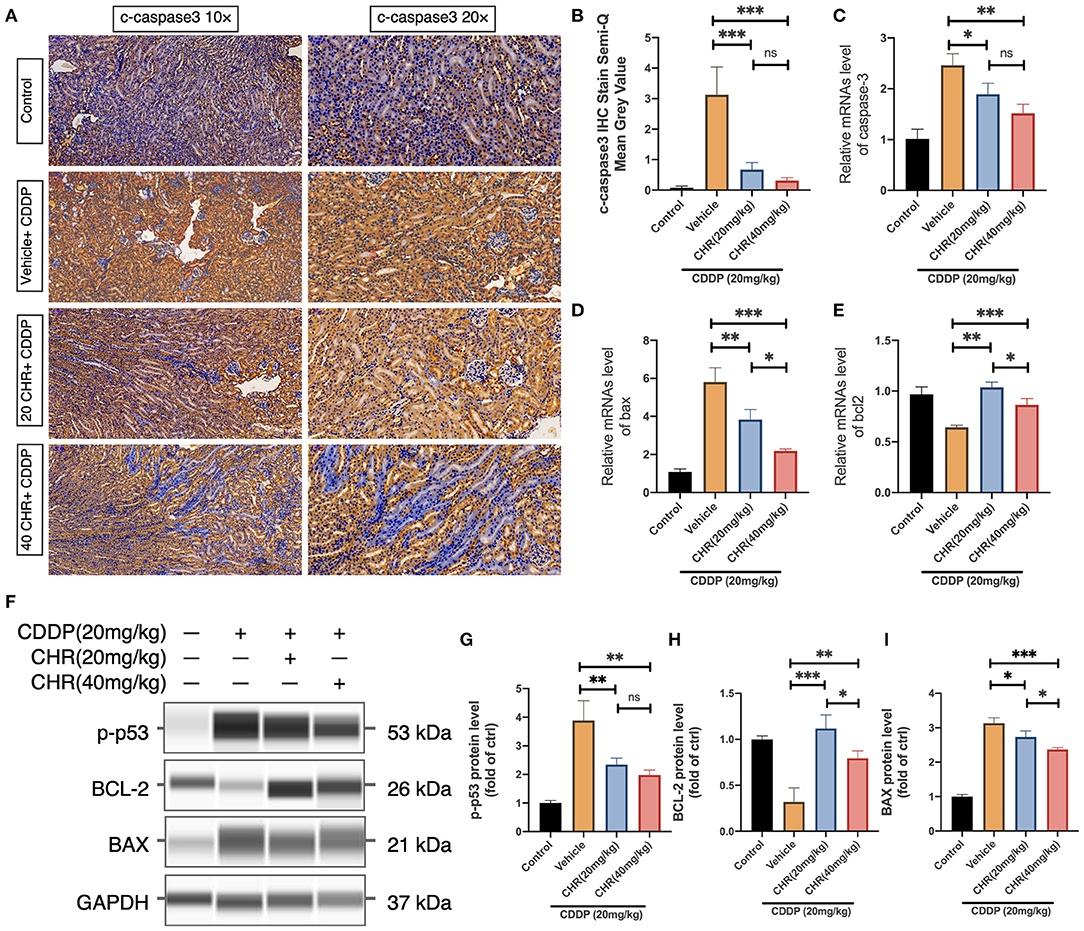
94% of researchers rate our articles as excellent or good
Learn more about the work of our research integrity team to safeguard the quality of each article we publish.
Find out more
CORRECTION article
Front. Physiol., 09 December 2021
Sec. Renal Physiology and Pathophysiology
Volume 12 - 2021 | https://doi.org/10.3389/fphys.2021.794302
This article is a correction to:
Chrysophanol Relieves Cisplatin-Induced Nephrotoxicity via Concomitant Inhibition of Oxidative Stress, Apoptosis, and Inflammation
 Siqing Ma1,2,3,4
Siqing Ma1,2,3,4 Heng Xu5
Heng Xu5 Weihua Huang1,2,3,4
Weihua Huang1,2,3,4 Yongchao Gao1,2,3,4
Yongchao Gao1,2,3,4 Honghao Zhou1,2,3,4
Honghao Zhou1,2,3,4 Xiong Li6*
Xiong Li6* Wei Zhang1,2,3,4*
Wei Zhang1,2,3,4*A Corrigendum on
Chrysophanol Relieves Cisplatin-Induced Nephrotoxicity via Concomitant Inhibition of Oxidative Stress, Apoptosis, and Inflammation
by Ma, S., Xu, H., Huang, W., Gao, Y., Zhou, H., Li X and Zhang W. (2021). Front. Physiol. 12:706359. doi: 10.3389/fphys.2021.706359
Error in Figure
In the original article, there was a mistake in Figure 4 as published. The wrong figure was published. The corrected capillary blot of BAX and GAPDH in Figure 4F is now consistent with the original data submitted during initiation validation process. The corrected Figure 4 appears below.

Figure 4. Chrysophanol pretreatment relieved CDDP-induced nephritic apoptosis of C57 mice via inhibition of p53 activation. (A) Representative graphs of IHC with c-caspase 3 antibody. (B) Semi-quantification and statistical analysis of c-caspase 3 expression for IHC staining in kidney tissues. (C) Caspase 3 mRNA expression. (D) Bax mRNA expression. (E) Bcl-2 mRNA expression. (F) The protein expression of p-p53, BCL-2, BAX, and GAPDH detected by capillary blot. (G) Quantitative and statistical analysis of relative p-p53 level in kidneys. (H) Quantitative and statistical analysis of relative BCL-2 level in kidneys. (I) Quantitative and statistical analysis of relative BAX level in kidneys. *p < 0.05, **p < 0.01, and ***p < 0.005. ns, no statistical difference.
The authors apologize for this error and state that this does not change the scientific conclusions of the article in any way. The original article has been updated.
All claims expressed in this article are solely those of the authors and do not necessarily represent those of their affiliated organizations, or those of the publisher, the editors and the reviewers. Any product that may be evaluated in this article, or claim that may be made by its manufacturer, is not guaranteed or endorsed by the publisher.
Keywords: chrysophanol, cisplatin, acute kidney injury, oxidative stress, apoptosis, inflammation
Citation: Ma S, Xu H, Huang W, Gao Y, Zhou H, Li X and Zhang W (2021) Corrigendum: Chrysophanol Relieves Cisplatin-Induced Nephrotoxicity via Concomitant Inhibition of Oxidative Stress, Apoptosis, and Inflammation. Front. Physiol. 12:794302. doi: 10.3389/fphys.2021.794302
Received: 13 October 2021; Accepted: 26 November 2021;
Published: 09 December 2021.
Edited and reviewed by: James A. McCormick, Oregon Health and Science University, United States
Copyright © 2021 Ma, Xu, Huang, Gao, Zhou, Li and Zhang. This is an open-access article distributed under the terms of the Creative Commons Attribution License (CC BY). The use, distribution or reproduction in other forums is permitted, provided the original author(s) and the copyright owner(s) are credited and that the original publication in this journal is cited, in accordance with accepted academic practice. No use, distribution or reproduction is permitted which does not comply with these terms.
*Correspondence: Xiong Li, bGl4aW9uZ0BnZHB1LmVkdS5jbg==; Wei Zhang, Y3N1emhhbmd3ZWlAY3N1LmVkdS5jbg==
Disclaimer: All claims expressed in this article are solely those of the authors and do not necessarily represent those of their affiliated organizations, or those of the publisher, the editors and the reviewers. Any product that may be evaluated in this article or claim that may be made by its manufacturer is not guaranteed or endorsed by the publisher.
Research integrity at Frontiers

Learn more about the work of our research integrity team to safeguard the quality of each article we publish.